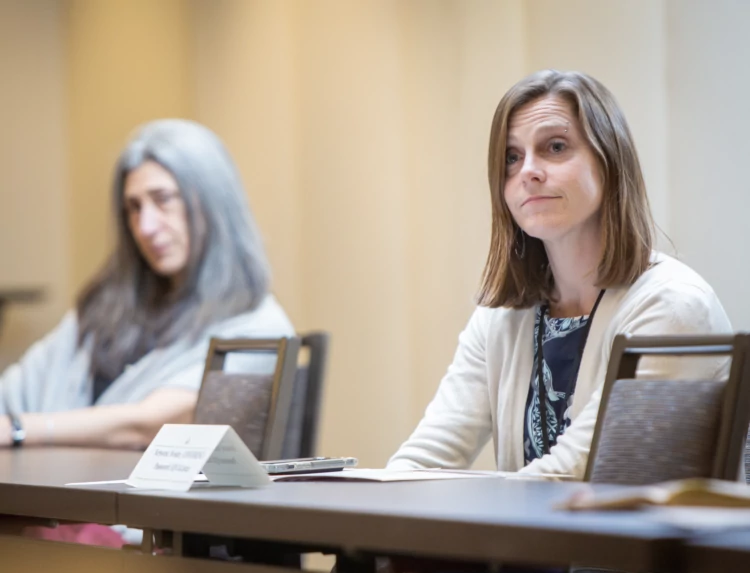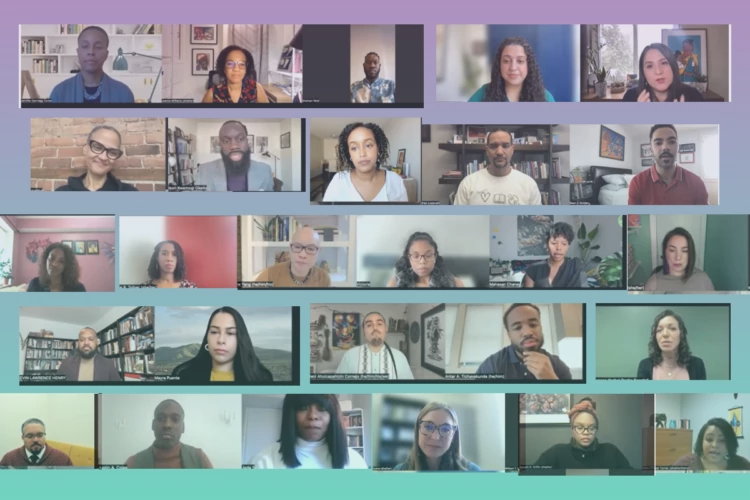Parents Working Retail in a Pandemic
Staying home sick is a luxury that America’s retail and food service workers simply can’t afford, a situation that will only make the Coronavirus epidemic worse. Over the past four years, we’ve surveyed over 100,000 retail and food service workers employed at 140 of America’s largest service sector companies—firms including Walmart, Costco, McDonalds, Starbucks, Home Depot, Olive Garden, Applebee’s, and many more.
Contrary to popular perception, these workers aren’t just teenagers working on the weekends or those just starting up the career ladder. Two thirds of retail and food workers are over the age of 24 and one-third are parents. In fact, one in ten American children has a parent working in the retail or food service sectors. How these parents fare at work has enormous repercussions for children in the U.S.
We find that parents working in retail and food service live very close to the financial edge. Fifty-nine percent of parents with young children aged 5-14 have household incomes of less than $35,000 per year. Thirty-eight percent reported experiencing a time in the last year when they went hungry because they couldn’t afford enough to eat or had to rely on food pantries or soup kitchens. Fifty-four percent report that they would not be able to cope with a $400 unexpected expense or income shock.
Unstable schedules push working parents even further towards a financial cliff. We find that workers who are sent home early or have shifts cancelled are significantly more likely to experience hunger or have trouble paying bills. Every hour of pay counts for parents earning a median wage of $11 an hour. For these workers, staying home sick without pay, let alone quarantining for two weeks without pay, is simply outside the realm of financial possibility.
The combination of extreme financial insecurity and widespread lack of paid sick leave is hazardous to family and public health.
But, many of these working parents lack access to paid sick leave. We find that 53 percent of parents with kids aged 5-14 lack paid sick leave through their employer. The combination of extreme financial insecurity and widespread lack of paid sick leave is hazardous to family and public health.
It’s no surprise then that workers in our survey report frequently working while sick. We find that 63 percent of parents we surveyed reported working while sick in the month prior to interview. Stacy, a worker we interviewed, explained, “I’m part of the working poor. And if I don’t watch it, I can be in that [soup kitchen] line. And so, sick days, I haven’t taken a sick day in three years. I don’t know what that is.” For the same reason, 27 percent of the working parents in our data report that their children went to school when sick.
Paid Sick: Raise the Floor or Take the High Road
It doesn’t have to be this way. States from Arizona to New Jersey have raised the floor on job quality by mandating that employers provide paid sick time to their workers. In Washington State, we found that the paid sick leave law that went into effect in January of 2019 increased access to paid sick leave among retail and food service workers by over 50 percent within six months and reduced the incidence of working while sick by 10 percent. In states that have passed paid sick leave laws, outbreaks of the seasonal flu are significantly less severe, likely because sick workers stay home and do not spread the infection to co-workers and customers.
We find that while only 39 percent of parents working in retail and food service jobs in states without paid sick leave laws have access to paid sick leave, the share is significantly higher, at 61 percent, among parents working in the 12 states and District of Columbia that require employers to provide paid sick leave benefits. And employers who have been required to offer paid sick leave understand the value. In a study of San Francisco’s paid sick leave law, 72 percent of employers supported the ordinance.
In states that have passed paid sick leave laws, outbreaks of the seasonal flu are significantly less severe…
But, some companies take the high road even when they are not required. We find that 100 percent of parents working hourly jobs at Ikea and Costco report having access to paid sick leave, as do 97 percent of those at Home Depot.
Other firms, especially those in fast food and casual dining, lag far behind. Our data show that just 17 percent of the parents we surveyed at Olive Garden have paid sick leave. Olive Garden has pledged to change its policies, but, many other food service workers need paid sick leave too. Our data reveal that workers at Applebees, Bob Evans, Waffle House, Cracker Barrel, IHOP, Sonic, Domino’s, Subway, and McDonalds all lack meaningful paid sick leave.
What Comes Next?
The severity of the novel coronavirus outbreak has placed service sector workers at the forefront of urgent policy debates. Access to paid sick leave, occupational safety, and access to health care are of heightened prominence for workers in the grocery, pharmacy, and big box sectors who are serving as the first responders of the service industry, providing the public with essential goods during the pandemic crisis period. Meanwhile, economic relief through reforms to unemployment insurance or a universal basic income are pressing concerns for millions of workers experiencing hours reductions or layoffs. Workers in apparel, specialty retail, fast food, and casual dining sectors who have been among the first to feel the negative force of economic recession, as over 40 percent of the U.S. population, as of this writing, are required to forego non-essential public outings.
What’s more, many parents working in these sub-sectors have schedules that are unstable and unpredictable. For these parents, that means that to work, they must effectively have “on-call” childcare, usually patched together from family and neighbors. This presents a real challenge in the face of the pandemic. Social distancing would suggest distance from these caregivers, many of who may be older and so particularly vulnerable.
As the shock of the current health and economic crisis takes a heavy toll on millions of Americans employed in the service sector, we must remember that millions of children are also vulnerable to dire consequences. Public policies and company actions that ameliorate the health and economic impact for these workers will also offer some protection to the 1 and 10 American children with a parent in the service sector. Social scientists have a vital role to play in charting the consequences of the pandemic for these children and illuminating policy potential levers to lessen their burden and ultimately improve their outcomes.
As the shock of the current health and economic crisis takes a heavy toll on millions of Americans employed in the service sector, we must remember that millions of children are also vulnerable to dire consequences.
For parents who work in sub-sectors where hours have been radically reduced, stores closed, and layoffs common, it will be crucial to understand the impact of these economic shocks on children. A large body of research on the Great Recession examined how economic hardship and uncertainty affected family functioning and child well-being. Now, just 12 years later, we must again take up the question of how these most recent hardships and uncertainties may scar another generation of American children, and how we can seek to reduce these effects in the years and decades ahead.






